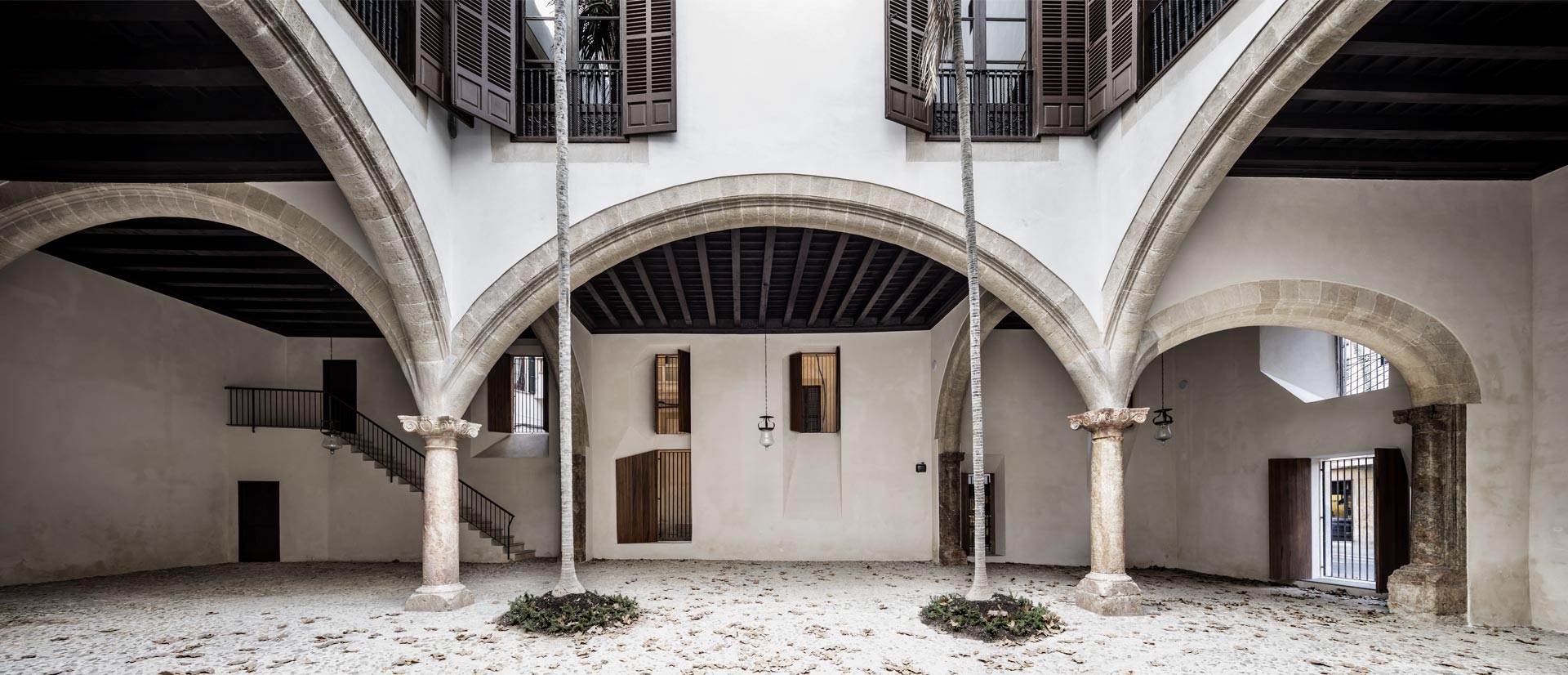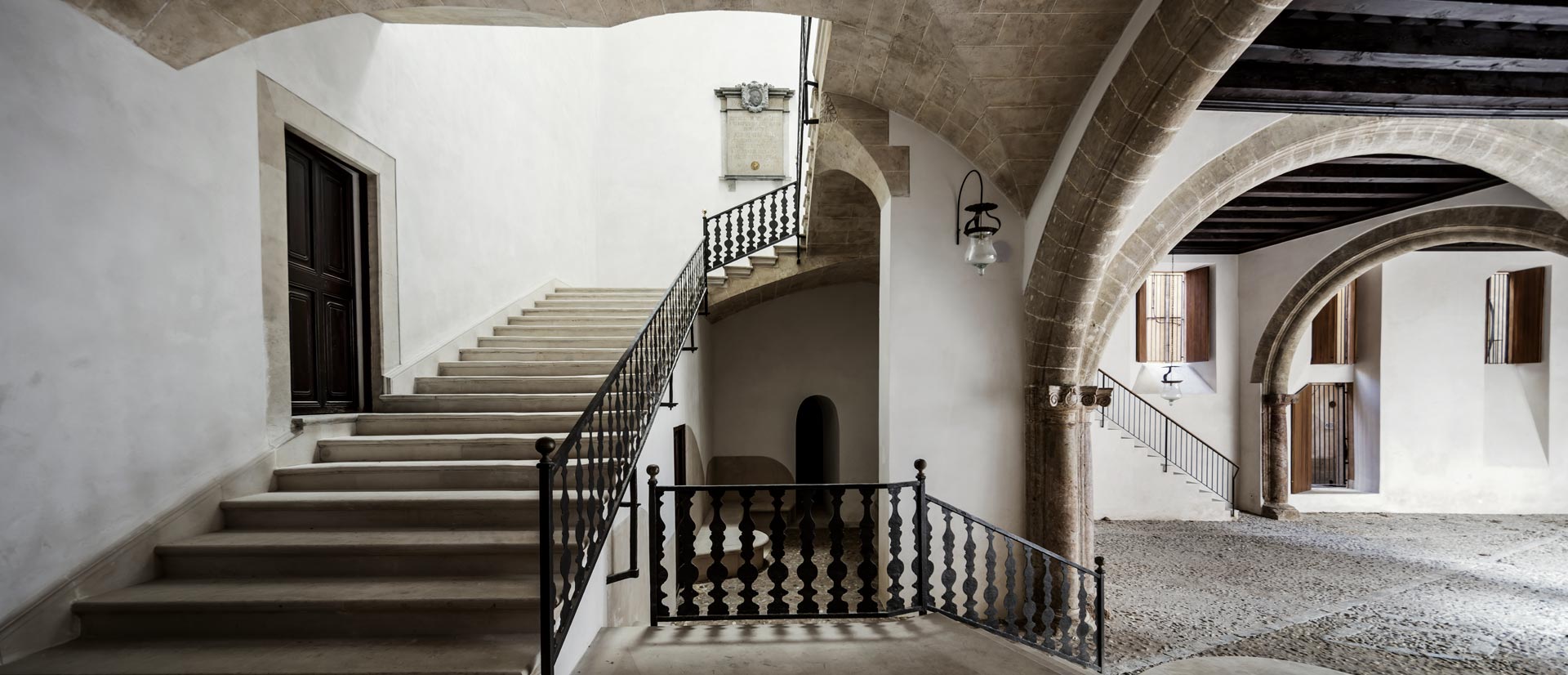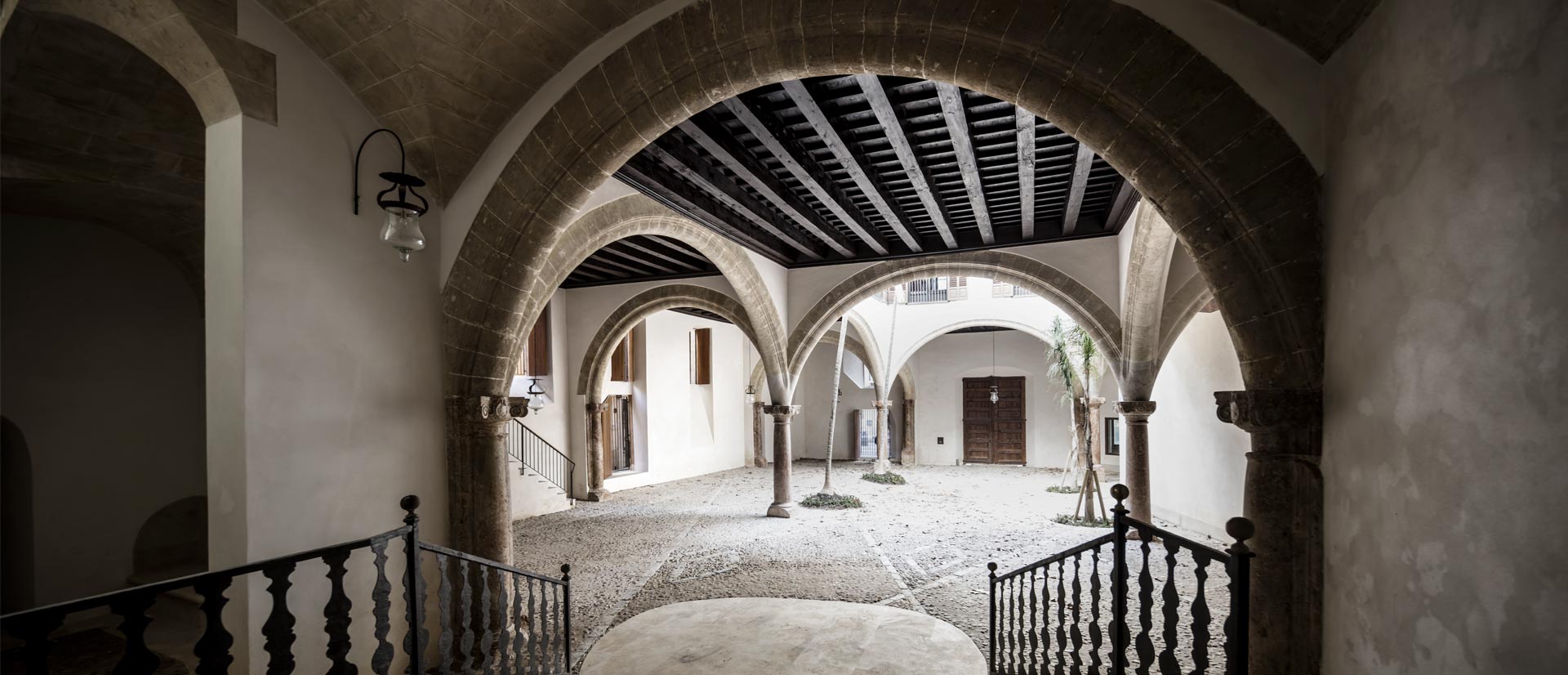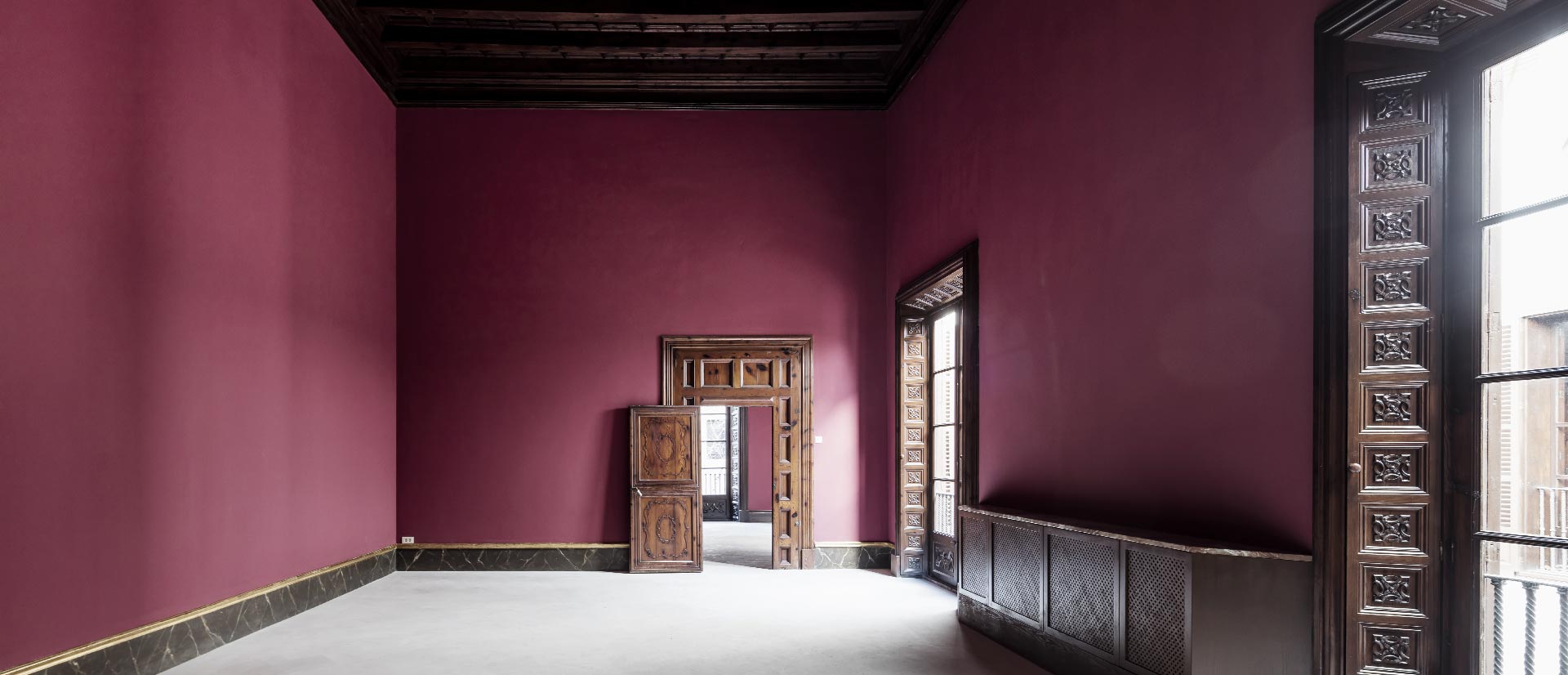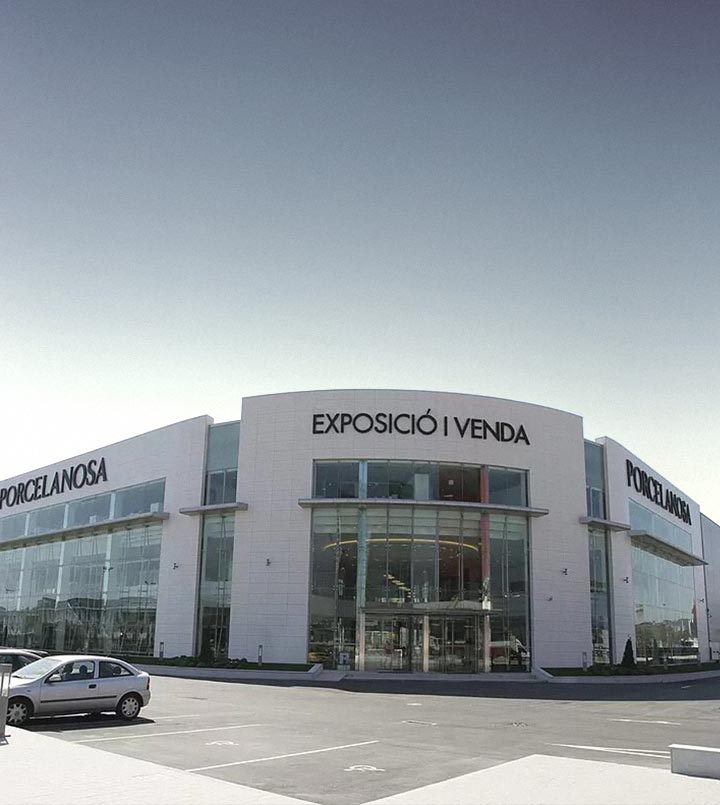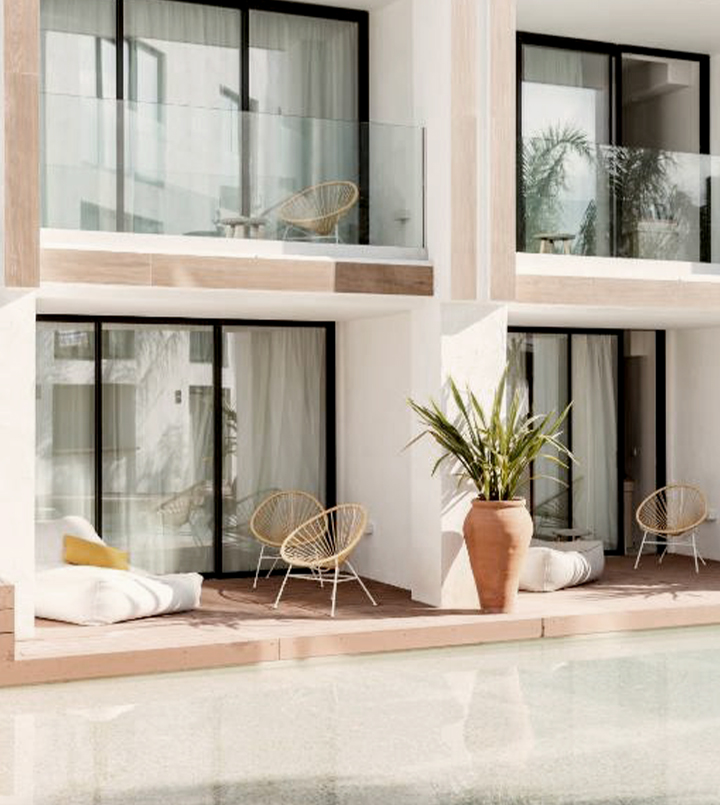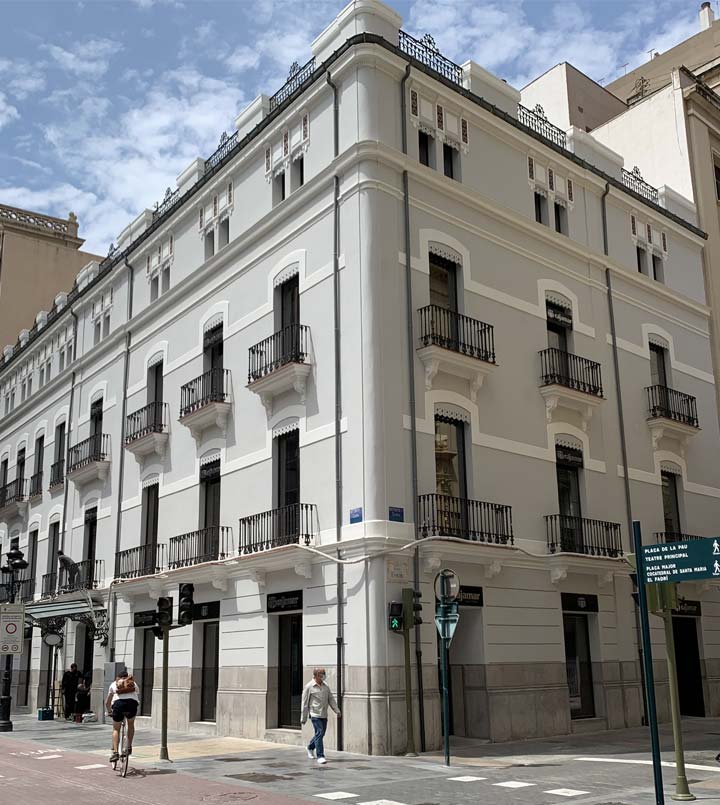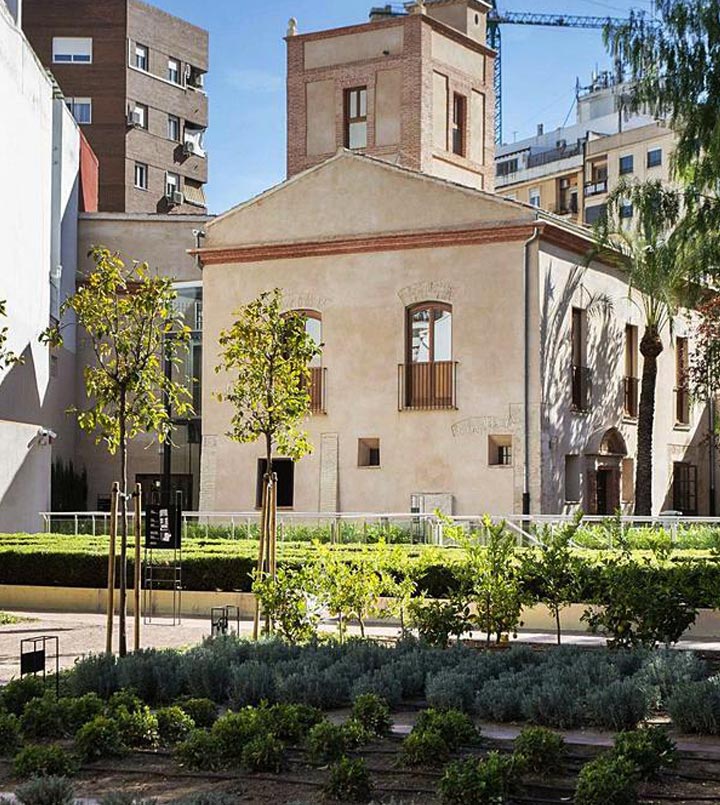Date:
2023
Category:
Date:
2014Category:
RehabilitationLocation:
Palma de Mallorca, Balearic IslandsCasal Balaguer
In the historic center of Palma, the Casal Balaguer is a large aristocratic house from the 14th century, renovated in the 16th century and enlarged in the 18th century. At the end of the last century, the City Council decided to turn it into a cultural center, going from being a family home to a public building open to the entire city. For the new program it was necessary to access previously closed areas, activate rooms and design a circulation according to the new public use. The new routes had to be intuitive, allowing one to walk easily through the complex geometry caused by the long evolution of the palace. For this, the project unites light and circulation: natural light guides the route, making evident the transfer from one area to another due to changes in lighting. In the transformation, an attempt is made so that the palace does not lose that mystery and spatial complexity that has accompanied its growth until today.
In the new program, the ground floor is the access area with the exhibition hall and the bar-restaurant. The structural reform on this floor recovers the original situation of the courtyard, with a full view of the thirteen arches that seem to support the house suspended. The main floor becomes a house-museum and on the roof floor will be the new library, the engraving workshops of the Círculo de Bellas Artes and a conference room.
The project acts from the inside, transforming the building with the decision to reoccupy it, to give it a new phase, to extend its life by making it more sustainable. Thus, the building is updated based on the previous one, with a transformation that accommodates the new functions. The effort is to make the old palace express the maximum spatial, material, historical qualities… because the new function allows a lot of freedom to draw a new building within the previous one, investigating the qualities of the old construction. Taking it as a construction, without the limitations of the use for which it was intended, allows us to stop seeing it as a building of domestic dimensions, and to value its spatial and physical qualities as the beginning of the new occupation. Discovering the unfinished condition of the existing building suggests that the actions on it have not ended, that it is something in evolution, imperfect, the result of the sum of stages in which this is just one more, not the last. This dialogue starts from a confidence in what has been found, from a positive observation that values and respects it as signs of a previous occupation, giving the project a temporary meaning where, in the end, it is not possible to recognize to which time it belongs.


